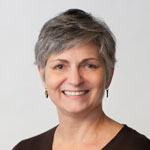Jan Meiers, PT, DPT, GCS
Clinical Associate Professor
Assistant Director of Clinical Education
Drexel University Physical Therapy Program
Background:
 Dr. Jan Meiers, PT, DPT, GCS, CEEAA has been a physical therapist since 1990. She is certified by the American Board of Physical Therapy Specialists as a Geriatric Clinical Specialist (GCS) and by the American Board of Physical Therapy Association’s Academy of Geriatrics as a Certified Exercise Expert for Aging Adults (CEEAA). Clinical experience has been across all settings, primarily home health and acute care, with an emphasis on geriatrics. Dr. Meiers is a full time Clinical Associate Professor and Assistant Director of Clinical Education in the Department of Physical Therapy and Rehabilitation Sciences at Drexel University. She currently maintains a clinical practice in acute care at the Hospital of the University of Pennsylvania and is interested in wellness in the geriatric population. Current teaching areas include pathophysioIogy, clinical decision making, health promotion and wellness, and geriatric physical therapy. Dr. Meier’s research area is falls in older adults.
Dr. Jan Meiers, PT, DPT, GCS, CEEAA has been a physical therapist since 1990. She is certified by the American Board of Physical Therapy Specialists as a Geriatric Clinical Specialist (GCS) and by the American Board of Physical Therapy Association’s Academy of Geriatrics as a Certified Exercise Expert for Aging Adults (CEEAA). Clinical experience has been across all settings, primarily home health and acute care, with an emphasis on geriatrics. Dr. Meiers is a full time Clinical Associate Professor and Assistant Director of Clinical Education in the Department of Physical Therapy and Rehabilitation Sciences at Drexel University. She currently maintains a clinical practice in acute care at the Hospital of the University of Pennsylvania and is interested in wellness in the geriatric population. Current teaching areas include pathophysioIogy, clinical decision making, health promotion and wellness, and geriatric physical therapy. Dr. Meier’s research area is falls in older adults.
Overview:
Fall Statistics for older adults (ages 65 and older) and the health consequences related nursing home admissions and death.
Key points:
- One in three older adults fall each year
- Less than half talk to their healthcare providers about it
- 2010 stats:
– 2.3 million nonfatal fall injuries treated in emergency departments; more than
-662,000 of these patients were hospitalized.
– $30 billion – direct medical costs of falls, adjusted for inflation
Falls & injuries.
Key points:
Number one cause of both fatal and nonfatal injuries such as cuts, head injuries and fractures (breaking) of bones (spine, hip, forearm, leg, ankle, pelvis, upper arm, hand) and osteoporosis.
Factors contributing to falls.
- Fear of Falling
- Modifiable factors such as
-Clutter
-Throw rugs
– Lighting
-Certain medications and/ or unnecessary medications
– Use of an assistive device (e.g. walker, cane)
– Decreased physical strength and endurance
-Footwear
– Nutritional status – hydration, vitamin D
- Non-modifiable
-Some medical conditions (e.g. arthritis)
-Normal aging changes in sensory systems (e.g. vision, vestibular, somatosensory)
Prevention
- Address environmental factors
- Vision check-up
- Physical activity & exercise
- Speak with primary care provider and possibly pharmacist
- CDC & STEADI Program
- Role of physical therapist, personal trainer, etc.
3 Key Points:
- Exercise is the best way to prevent falls.
- Older adult exercise recommendations are no different than for younger adults.
- Weight lifting and weight-bearing exercises (walking/ tennis vs. swimming or biking) are best for maintaining bone density which decreases fracture risk.

 Valentine Group Health
Valentine Group Health


